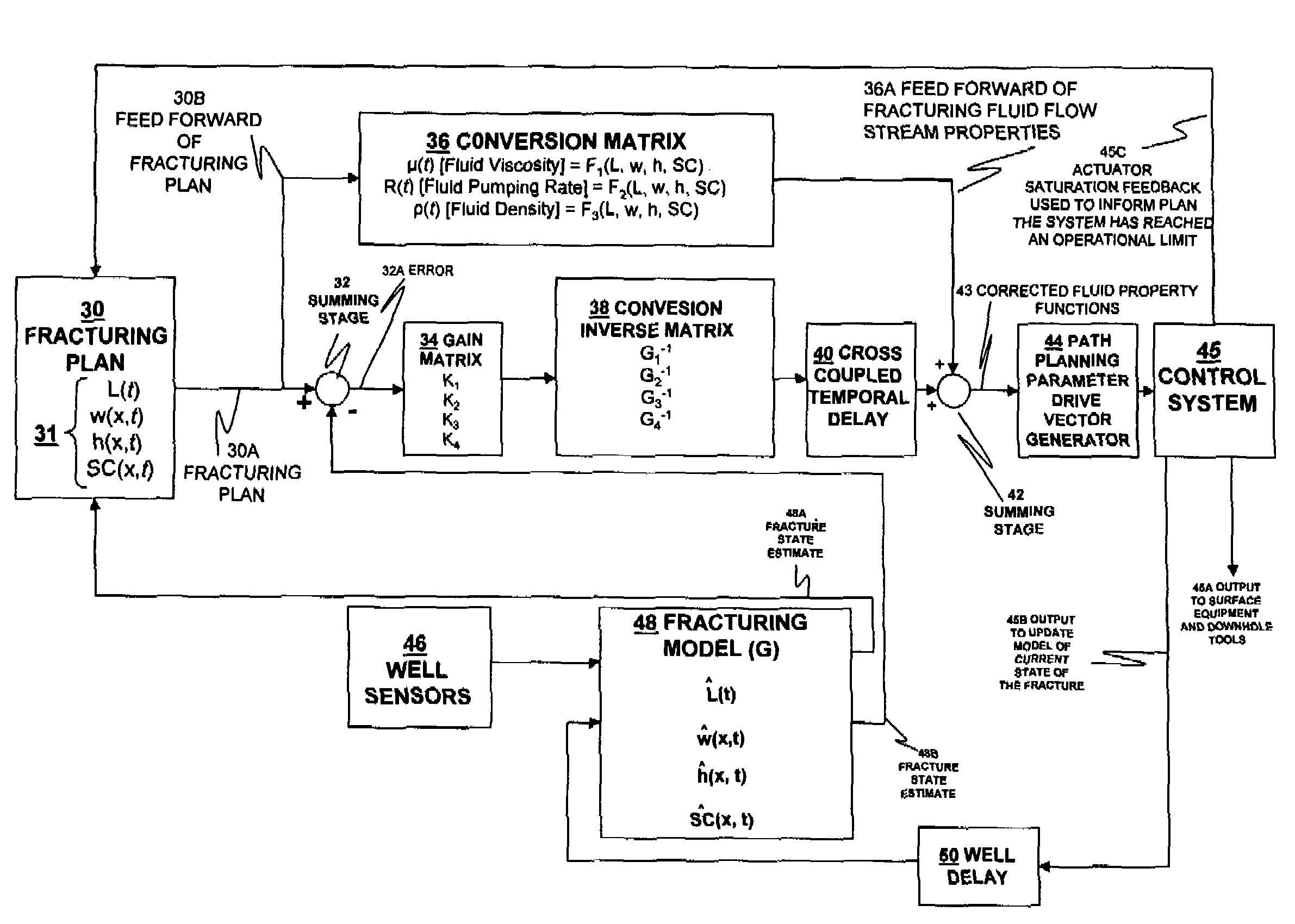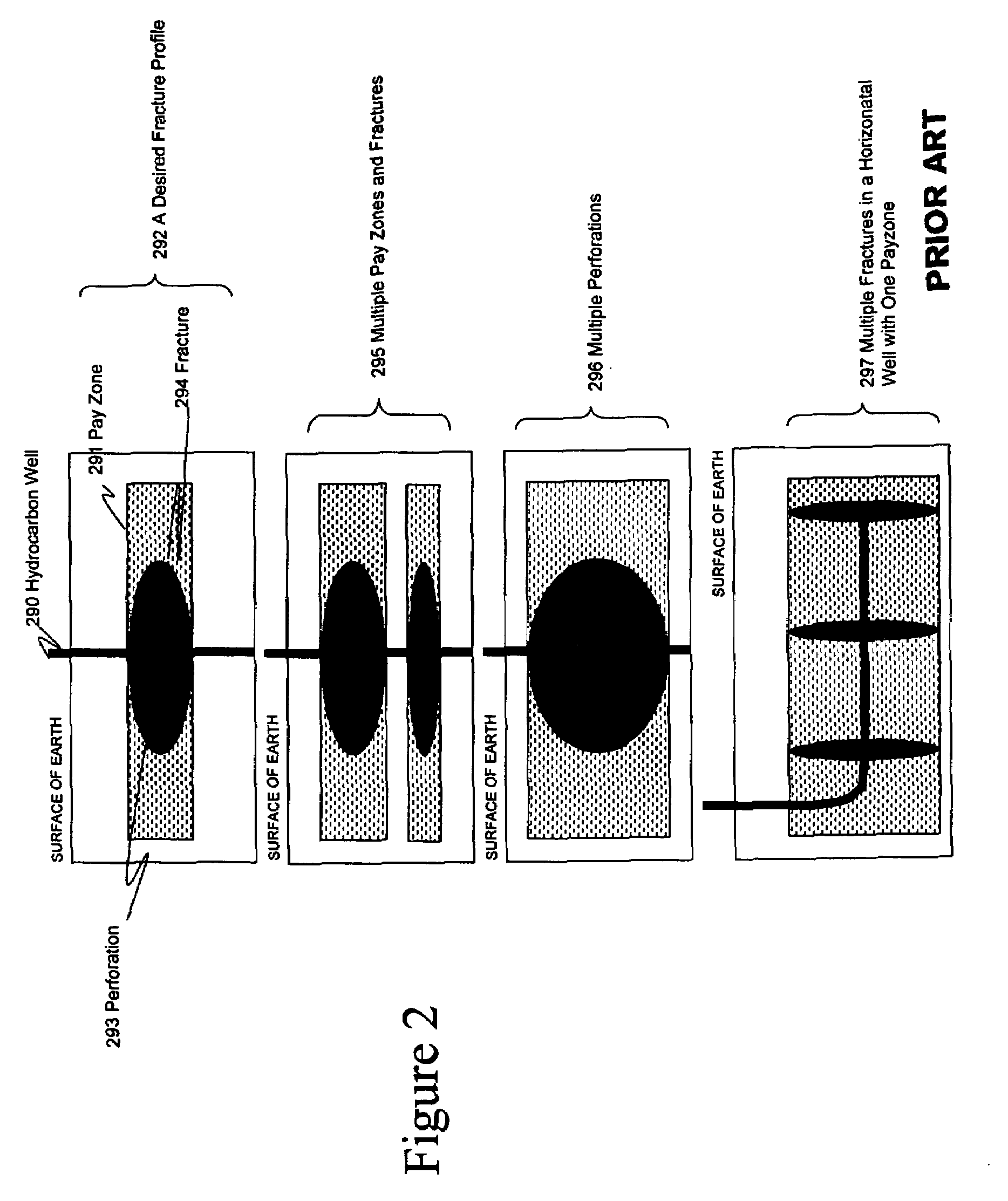Methods and systems for fracturing subterranean wells
a technology of hydraulic fracturing and subterranean wells, applied in the direction of fluid removal, survey, borehole/well accessories, etc., can solve the problems of process sometimes being stopped, damage surface equipment or the well casing itself, and the pressure of the pumping system exceeding the design limits of the system, so as to reduce the risk of undesired results and increase the cost of providing expert labor
- Summary
- Abstract
- Description
- Claims
- Application Information
AI Technical Summary
Benefits of technology
Problems solved by technology
Method used
Image
Examples
Embodiment Construction
[0029]The numerous innovative teachings of the present application will be described with particular reference to the presently preferred embodiment (by way of example, and not of limitation).
[0030]FIG. 2 shows four embodiments of desired side-view profiles of resulting subterranean fractures, such as can be formed using the methods and systems of the present innovations, by way of examples, and not of limitations. In one embodiment, desired fracture profile 292 shows a side view of a subterranean fracture 294 emanating from perforation 293 in hydrocarbon well 290 that is perfectly contained vertically within pay zone (e.g. hydrocarbon-bearing formation or zone) 291. Any extension beyond the pay zone can be undesirable because no extra hydrocarbon-drainage area is opened-up for production and the fracturing time and fluid was wasted in achieving the non-paying fracture portion. In another embodiment, multiple horizontal pay zones or fractures 295 can be accessed and formed from the ...
PUM
 Login to View More
Login to View More Abstract
Description
Claims
Application Information
 Login to View More
Login to View More - R&D
- Intellectual Property
- Life Sciences
- Materials
- Tech Scout
- Unparalleled Data Quality
- Higher Quality Content
- 60% Fewer Hallucinations
Browse by: Latest US Patents, China's latest patents, Technical Efficacy Thesaurus, Application Domain, Technology Topic, Popular Technical Reports.
© 2025 PatSnap. All rights reserved.Legal|Privacy policy|Modern Slavery Act Transparency Statement|Sitemap|About US| Contact US: help@patsnap.com



